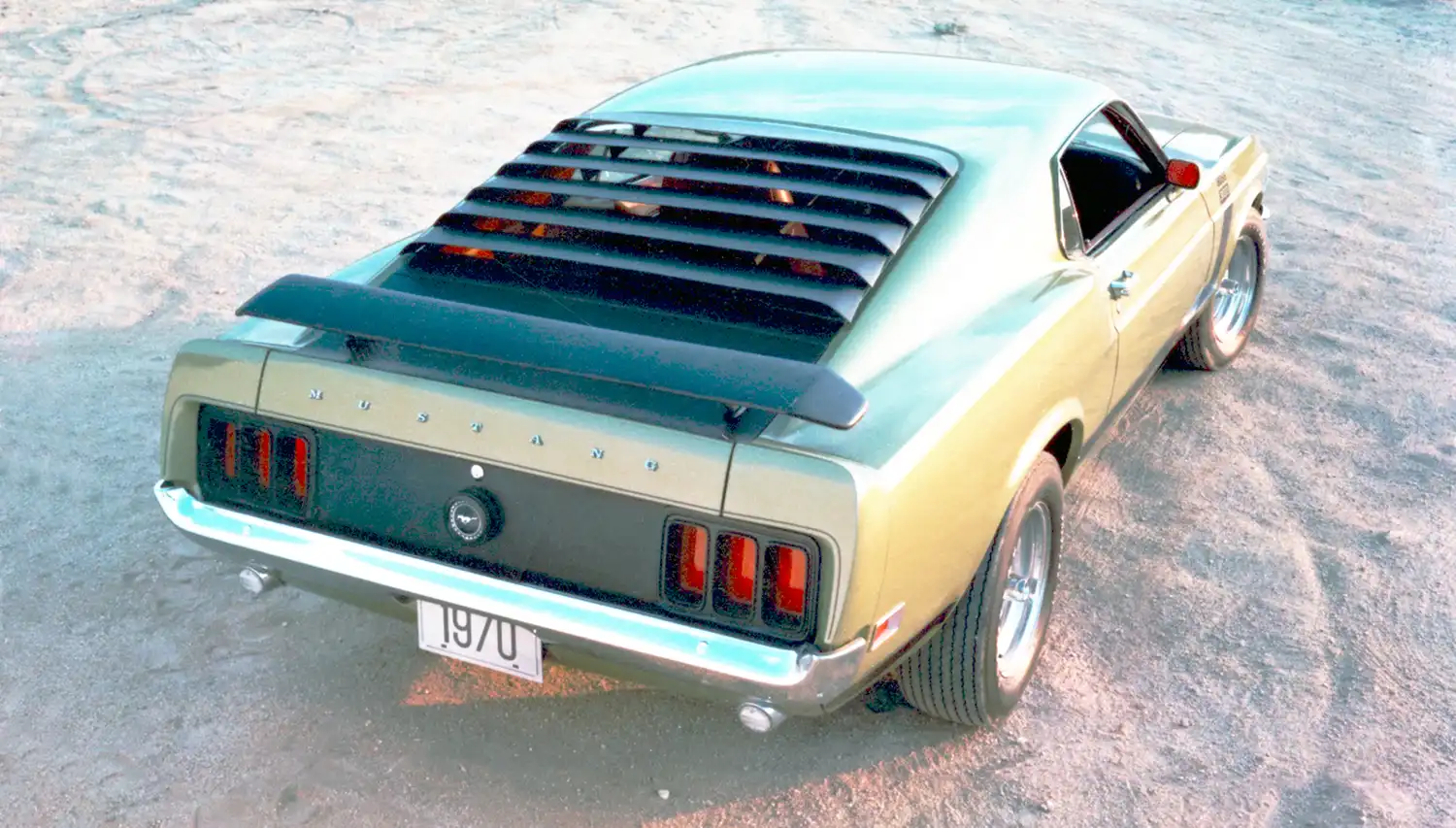
The 1970 Ford Mustang Boss 302 Fastback is not just a car; it’s a revered piece of American muscle car history, born from the fierce competition of the Trans-Am racing series. Introduced in 1969, the Boss 302 was Ford’s direct answer to Chevrolet’s Camaro Z/28, specifically designed to meet the SCCA Trans-Am homologation rules, which required production models to share components with their racing counterparts. The Mustang itself, first launched in 1964, had already cemented its place as a cultural phenomenon, but the Boss 302 elevated its status to a purebred performance machine. The 1970 model year refined its predecessor’s aggressive styling and enhanced its performance capabilities, making it one of the most celebrated and sought-after Mustangs of all time. Its limited production run and competition pedigree contribute significantly to its iconic status among enthusiasts.
Design and Aerodynamics
The 1970 Ford Mustang Boss 302 Fastback boasted an aggressive and purposeful design that clearly communicated its performance intentions. Building on the restyled 1969 Mustang, the 1970 model featured distinctive C-stripes, a blacked-out grille with recessed headlights, and a front spoiler designed to reduce lift at high speeds. A rear decklid spoiler was also standard, contributing to aerodynamic stability. The fastback body style, with its sloping roofline, was inherently sporty and became synonymous with Mustang performance. The Boss 302 also featured unique side scoops and a functional shaker hood scoop in some configurations, funneling cool air directly to the engine. These design elements were not just aesthetic; they were functional enhancements that contributed to the car’s formidable track performance.
Interior Appointments
While the primary focus of the Boss 302 was performance, its interior offered a functional and driver-centric environment characteristic of muscle cars of its era. The standard Mustang interior was utilized, but with subtle touches that reinforced its sporty character. High-back bucket seats provided good support during spirited driving, and a performance-oriented dashboard featured a comprehensive array of gauges, including a large tachometer and speedometer, along with gauges for oil pressure, water temperature, and fuel level. A Hurst T-handle shifter for manual transmission models added to the tactile driving experience. While not luxurious, the interior was well-appointed for a performance vehicle, prioritizing driver control and an immersive driving experience.
Chassis and Suspension
To handle the increased power and aggressive driving, the 1970 Ford Mustang Boss 302 received significant upgrades to its chassis and suspension. It featured heavy-duty shock absorbers, stiffer springs, and thicker anti-roll bars both front and rear, designed to minimize body roll and improve handling during hard cornering. Power-assisted front disc brakes were standard, providing superior stopping power crucial for a performance car of its caliber, complemented by drum brakes at the rear. Quick-ratio steering further enhanced responsiveness, making the Boss 302 surprisingly nimble for its size. These engineering enhancements transformed the Mustang from a pony car into a legitimate road-racing contender.
Power and Performance
The heart of the 1970 Ford Mustang Boss 302 Fastback was its high-revving 302 cubic inch (4.9L) V8 engine, specifically designed for Trans-Am racing. This powerplant featured large port, high-flow cylinder heads, a solid lifter camshaft, a high-rise aluminum intake manifold, and a four-barrel carburetor. Officially rated at 290 horsepower, many enthusiasts believe its actual output was closer to 310-320 horsepower. What truly set the Boss 302 engine apart was its ability to rev, with a strong power band extending to higher RPMs, making it incredibly effective on a race track. This engine was typically paired with a close-ratio four-speed manual transmission, sending power to a limited-slip differential. This combination allowed the Boss 302 to achieve impressive acceleration times and formidable top speeds, establishing its reputation as a true performance icon.
Racing Pedigree and Legacy
The 1970 Ford Mustang Boss 302 Fastback’s legacy is deeply intertwined with its racing success. In the hands of legendary drivers like Parnelli Jones, the Boss 302 dominated the SCCA Trans-Am series, clinching the manufacturer’s championship for Ford in both 1969 and 1970. This direct link between the street car and the race car was a powerful marketing tool and solidified the Boss 302’s reputation as a genuine performance machine. Its limited production and direct lineage to successful racing efforts make it highly collectible today, representing a peak era of American muscle car development and competition. The Boss 302 remains a symbol of Ford’s engineering prowess and commitment to motorsports.
Summary:
- The 1970 Ford Mustang Boss 302 Fastback was a Trans-Am racing homologation special.
- Features aggressive styling with C-stripes, spoilers, and a blacked-out grille.
- Interior is driver-focused with performance-oriented gauges and high-back seats.
- Equipped with heavy-duty suspension, improved steering, and front disc brakes.
- Powered by a high-revving 302 cubic inch V8 engine officially rated at 290 horsepower.
- Typically paired with a close-ratio four-speed manual transmission.
- Achieved SCCA Trans-Am series manufacturer’s championships in 1969 and 1970.
- Highly collectible due to its limited production and racing heritage.
Disclaimer: This article provides general information about the 1970 Ford Mustang Boss 302 Fastback for enthusiasts. Vehicle specifications can vary, and prospective buyers should conduct their own thorough research.
Source: Ford Heritage Vault
AI Assistance: Gemini
